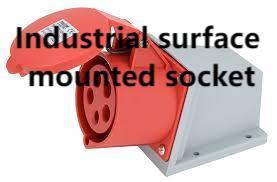How to Obtain CE Certification in India: A Comprehensive Guide
Introduction
The CE mark, standing for Conformité Européenne (European Conformity), is a mandatory certification for products sold within the European Economic Area (EEA), which includes the European Union, Iceland, Liechtenstein, and Norway. For Indian manufacturers and exporters aiming to access the lucrative European market, obtaining CE certification is essential to demonstrate compliance with EU health, safety, and environmental protection standards. While not mandatory for products sold within India, CE certification is a critical requirement for exporting goods to the EEA, ensuring free movement across its member states. This article provides a detailed guide on how Indian businesses can achieve CE certification, covering the identification of applicable directives, the certification process, the role of Notified Bodies, and strategies to overcome common challenges, empowering manufacturers to navigate this complex but rewarding process.
Identifying Applicable EU Directives and Standards
The first step in obtaining CE certification is to determine whether a product requires the CE mark and identify the relevant EU directives or regulations. Not all products need CE certification; it applies to specific categories, such as electronics, medical devices, toys, machinery, and personal protective equipment. Indian manufacturers must carefully analyze their product to pinpoint the applicable directives, such as the Machinery Directive (2006/42/EC), Low Voltage Directive (2014/35/EU), or Medical Devices Regulation (EU 2017/745). Some products may fall under multiple directives, requiring compliance with all relevant requirements.
To simplify compliance, manufacturers can refer to harmonized standards (EN standards) published in the Official Journal of the European Union. These standards provide detailed technical specifications that, if followed, are presumed to meet directive requirements. For example, a medical device manufacturer might consult EN 60601 for electrical safety standards. Indian businesses can access these standards through organizations like the Bureau of Indian Standards (BIS) or international certification bodies. Conducting a thorough gap analysis to compare the product against these standards is crucial to identify areas needing improvement before proceeding further.
The CE Certification Process
The CE certification process involves a series of structured steps to ensure a product meets EU requirements. Indian manufacturers can follow these steps to achieve certification:
-
Risk Assessment: Conduct a comprehensive risk analysis to identify potential hazards associated with the product, such as electrical, mechanical, or environmental risks. This involves evaluating the product’s design, intended use, and potential misuse.
-
Compliance with Directives: Ensure the product meets the essential requirements of the identified directives. This may involve redesigning components, modifying manufacturing processes, or conducting specific tests (e.g., electromagnetic compatibility or safety tests).
-
Technical Documentation: Prepare a Technical Construction File (TCF) that includes detailed information on the product’s design, manufacturing process, test results, and risk assessments. The TCF must be maintained for at least 10 years after the product is placed on the market.
-
Conformity Assessment: Depending on the product’s risk level, manufacturers may self-certify (for low-risk products) or engage a Notified Body for assessment (for high-risk products like medical devices). Self-certification involves the manufacturer declaring compliance, while Notified Body assessment requires third-party verification.
-
Declaration of Conformity: Draft and sign an EU Declaration of Conformity, stating that the product meets all applicable requirements. This document must accompany the product in the EEA market.
-
Affix the CE Mark: Apply the CE mark visibly, legibly, and indelibly to the product, packaging, or accompanying documentation, ensuring it meets the minimum size requirement of 5mm (unless specified otherwise).
Indian manufacturers can work with local consultants, such as Aleph India or Corpbiz, to streamline documentation and testing processes, ensuring compliance with EU standards.
Role of Notified Bodies in CE Certification
For high-risk products, such as medical devices, gas appliances, or certain machinery, CE certification requires the involvement of a Notified Body—an organization accredited by an EU member state to assess product conformity. These bodies review the Technical Construction File, conduct product testing, and verify compliance with applicable standards. If successful, the Notified Body issues a certificate, and their identification number must appear alongside the CE mark on the product.
Indian manufacturers must use the Nando database to identify a suitable Notified Body, as only these organizations are authorized to perform conformity assessments for specific directives. Engaging a Notified Body can be costly, with fees depending on the product’s complexity and the assessment procedure. However, their expertise ensures compliance, reducing the risk of market rejection. For low-risk products, manufacturers can opt for self-certification, but they must still ensure all technical documentation and risk assessments are robust to withstand potential scrutiny by EEA authorities.
Overcoming Challenges in CE Certification
Obtaining how to get ce certification in india presents several challenges, but strategic approaches can mitigate these obstacles:
-
Navigating Complex Regulations: The diversity of EU directives and harmonized standards can be overwhelming. Indian manufacturers can overcome this by consulting with experienced CE certification agencies like 3M Management Consultants or CertPro, which offer guidance on applicable requirements.
-
High Costs: Testing, documentation, and Notified Body assessments can be expensive, particularly for small and medium-sized enterprises (SMEs). To manage costs, manufacturers can prioritize harmonized standards for compliance and explore cost-effective testing facilities in India, such as those accredited by BIS or international bodies.
-
Technical Expertise: Many Indian businesses lack in-house expertise in EU regulations. Partnering with local consultants or training staff on CE requirements can bridge this gap. Organizations like E-Startup India offer tailored support for MSMEs.
-
Documentation and Language Barriers: Preparing a TCF and translating documents into English or other EEA languages can be time-consuming. Engaging professional services or using standardized templates can streamline this process.
By proactively addressing these challenges, Indian manufacturers can reduce delays and ensure a smoother certification process.
Conclusion
Obtaining CE certification is a critical step for Indian manufacturers and exporters aiming to access the European Economic Area’s vast market of over 500 million consumers. By identifying applicable directives, following a structured certification process, engaging Notified Bodies when necessary, and addressing common challenges, businesses can successfully achieve compliance with EU standards. While the process may be complex and resource-intensive, the benefits—market access, enhanced credibility, and consumer trust—make it a worthwhile investment. Partnering with experienced consultants and leveraging local resources can further simplify the journey, enabling Indian companies to compete effectively in the global marketplace. As demand for high-quality, compliant products grows, CE certification remains a vital tool for Indian businesses to expand their reach and uphold international standards.



